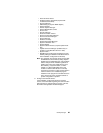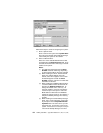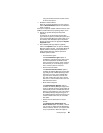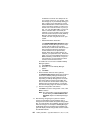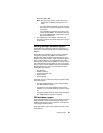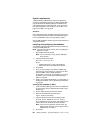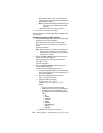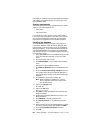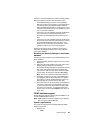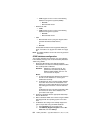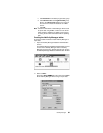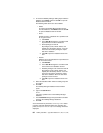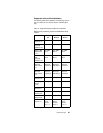Netfinity Manager 91
Note: Use PUBLIC or authorize only a specific ID
or group name. Netfinity Manager update
programs use the DB2SQLC0 package
and do not require specific table privileges.
To revoke privileges, substitute REVOKE for GRANT in
the command line.
To configure Netfinity Manager to discontinue export
data through ODBC for use on DB2, refer to “ODBC
database support” on page 93.
Cataloging the database in the managing
system:
If the manager is using a remote database, cata-
log the node the database resides on and then catalog the
database to that node.
Once this step has been completed, the name of the Netfin-
ity Manager database will appear in the System Information
Tools Database Selection window.
Deleting the database
The following information describes how to delete the data-
base for all supported operating systems.
Note: If your operating system is OS/2, refer to “Deleting
the database on OS/2”.
1. Start a DB2 command window.
2. Type
DB2 DROP DATABASE
databasename
where
databasename
is the name of the database as
specified during the database installation.
3. Press Enter.
Deleting the database on OS/2:
1.Insert the
Netfinity
Manager CD-ROM
into the database server CD-ROM
drive (in this example, the CD-ROM drive is E).
2. Start an OS/2 window or full-screen session.
3. Make the CD-ROM drive the active drive.
Type E: and press Enter.
4. Type the following command at the OS/2 prompt:
NETFINDB DELETE /DBNAME=
databasename
where
databasename
is the name of the database as
specified during NETFINDB execution.
5. Press Enter.
To configure Netfinity Manager to discontinue export data
through ODBC for use on DB2, refer to “ODBC database
support” on page 93.
Lotus Notes database support
To enable the Netfinity Manager to export system data to a
Lotus Notes database, the following must be done:
1. Install the Netfinity Manager database template on the
Lotus Notes server.
2. Enable Netfinity Manager to export to the Lotus Notes
server.



